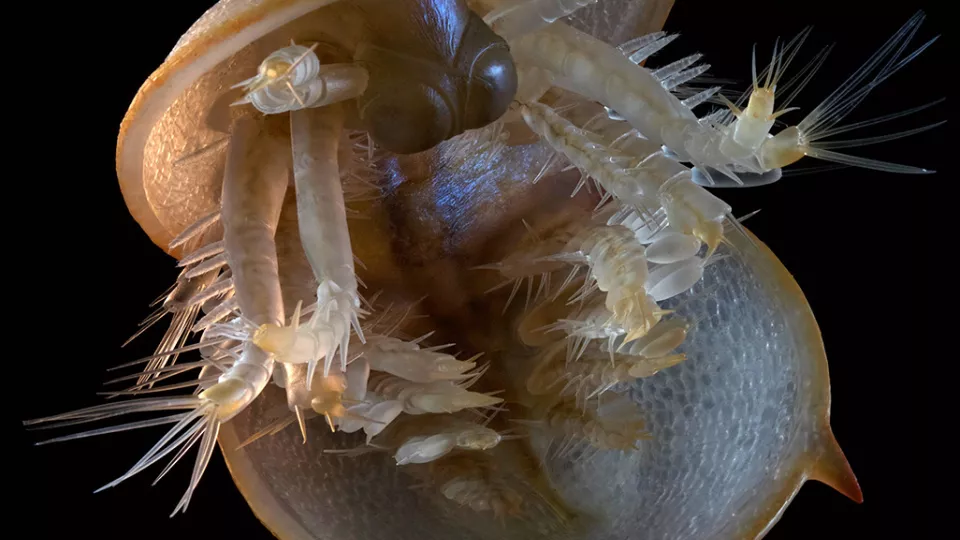“The sculptures have been greatly scaled up and show the animal’s complete anatomy down to the smallest detail, including all the extremities and antennae”, says Mats E. Eriksson, geology professor at Lund University.
Eriksson’s research focuses mainly on microscopic fossils and attempts, among other things, to reconstruct ecosystems that are several hundred million years old.
The sculptures were created in connection with a research article he wrote on Agnostus pisiformis. He was assisted by the Danish artist and designer, Esben Horn, whose company, 10 Tons, specialises in producing lifelike sculptures of both extant and extinct organisms for museums and institutions around the world.
The ancient Agnostus pisiformis is mainly known from Scandinavia, but it has been recorded also elsewhere, for example in England and Russia. Due to the fact that the species only lived for a limited period of time just over 500 million years ago, it is possible to use the fossilto date various rocks, which explains why Agnostus pisiformis is a celebrity within science.
However, the species is not only useful for researchers as a time reference, as it also gives them valuable insights into ancient life on Earth. This fossil is so well-preserved and occurs in such large numbers that it is possible to understand its complete development, from juvenile to adult.
“The incredible degree of preservational detail means that we can grasp the entire anatomy of the animal, which in turn reveals a lot about its ecology and mode of life”, says Mats E. Eriksson.
He now hopes that the sculptures of Agnostus pisiformis will become part of a travelling exhibition on the long lost faunas that existed in the oceans more than 500 million years ago. He wants to spread the knowledge about early lifeduring what he regards as a very exciting time in Earth history. He also wants to highlight that palaeontology, that is, the study of fossils, is not just about dinosaurs.
“There were actually ecosystems seething with fantastic and bizarre life forms several hundred million years before the dinosaurs even appeared”, concludes Mats E. Eriksson.
The research was funded by National Geographic (grant #GEFNE 143-15) and the Swedish Research Council (grant 2015-05084).
Publication: Agnostus pisiformis — a half a billion-year old pea-shaped enigma
Contact: Mats E. Eriksson, professorDepartment of Geology, Lund University+46 46 222 96 02mats [dot] eriksson [at] geol [dot] lu [dot] se (mats[dot]eriksson[at]geol[dot]lu[dot]se)
